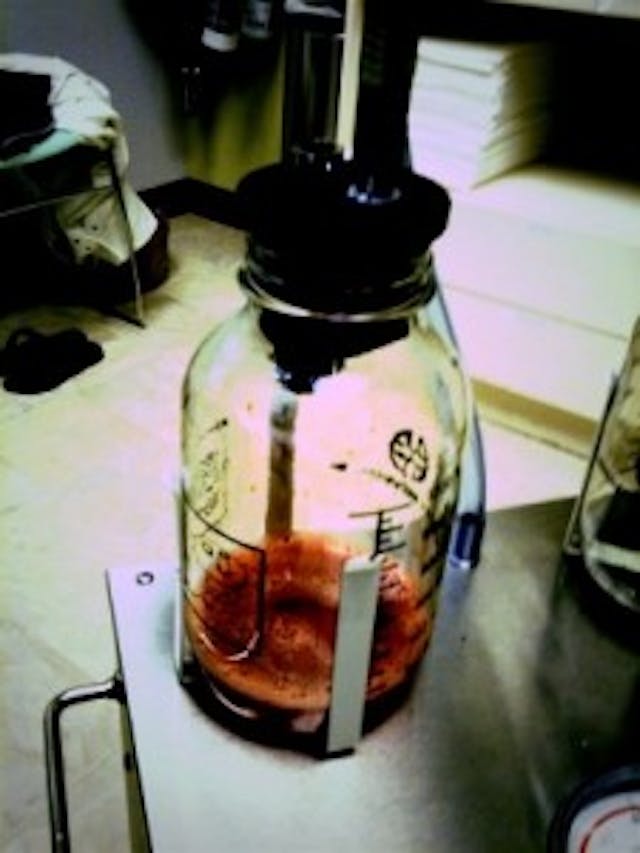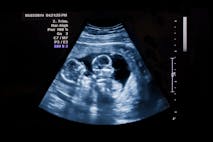
Western Australia expands IVF law to allow easier access
Angeline Tan
·
Pictures of aborted babies: Are they accurate?

One of the first pages that pops up on Google when you look up “abortion picture” is this blog, which presents a photo that was allegedly taken in an abortion clinic by a woman who aborted a six-week-old unborn baby. The picture, which is taken from a considerable distance away, shows what looks to the untrained eye like a jar of blood. The blog owner claims that this is a “true” picture of an abortion, and that pro-lifers’ pictures of aborted babies with hands, feet, faces, etc. are fake.
The blog accuses pro-lifers of lying:
The problem I have with many of the advocates which identify themselves as Pro-Life is the lying. Standing out in front of abortion clinics or at marches with these fake pictures of “aborted fetuses” claiming they are real for dramatic effect. Or to harass and bully women into making the choices they feel are morally right.
The blog goes on to say:
I am glad that she wrote and shared unbiased and real documentation of an abortion at the typical 6 weeks gestation. That is the time frame in which 80+% of abortions take place.
Is the picture of the jar of blood really representative of the majority of abortions in America? Well…not so much.
First of all, the blogger’s numbers are way off. According to the Centers for Disease Control and Prevention’s abortion statistics for 2009, (the most recent year that such statistics are available) the percentages are as follows.
6 weeks or less 35.2%
7-8 weeks: 34.6%
Over 9 weeks: 31%
Over 13 weeks: 10% (down from 12% a few years ago)
Over 22 weeks: 1.3%
So we see that the number of abortions taking place at six weeks is much lower than the blogger claims it is. In reality, almost two thirds of abortions take place after six weeks.
A six-week-old baby has a beating heart and functioning brain, but she does not have developed fingers and toes, and her fragile body is often obliterated by the powerful suction machine. But at just seven weeks, you can see in this video from The Endowment for Human Development an embryo’s tiny hands moving while he hiccups. By 8 weeks, very few people could look at an unborn baby and not see him or her as a miniature human being. Here you can see an eight-week-old baby moving her arms, and the site describes how, by the eighth week, she shows signs of being right- or left-handed. Keep in mind that almost a third of all abortions take place after this time.
We know that many of the babies who are aborted look human (of course, the humanity of an unborn child is not based on how she looks – but that is a topic for another article.)
So are the photos accurate? To give further evidence, I would like to turn to a book written by pro-abortion feminist Wendy Simonds called Abortion at Work: Ideology and Practice in a Feminist Clinic (New Brunswick, New Jersey: Rutgers University Press, 1996). You can acquire the book on Amazon. Simonds describes what she observed at a busy abortion clinic, and she shares interviews with the clinic staff.
Simonds is no friend to pro-lifers. In her own words, on page 229 of Abortion at Work, she states:
Denying women access to safe abortion (whether we have been raped or not) is itself a form of figurative, if not literal, violation…. Rape denies us bodily integrity; so does restricting abortion. Both are strategies designed to subjugate women.
Simonds does not mince words – in her mind, people who oppose killing unborn children are no better than rapists. Later in the book, she goes on to describe how clinic workers bravely fought off “antis” (her term for pro-life demonstrators, from the word “anti-choice”). It is an understatement to say that Simonds is unlikely to be biased toward the pro-life viewpoint.
Yet Simonds includes in her book quotes from clinic workers speaking very candidly about what they do in the clinic. She quotes a clinic worker saying:
Following first trimester abortions, sterile room workers strain the contents of the aspirator jar and cannulae to isolate the fetal tissue… After eight weeks gestation, weight should increase according to the doctor’s estimate of gestational length, and sterile room workers look for fetal parts. If they did not find evidence of the spine, skull, and upper and lower extremities, the client was called back into the examination room for a reaspiration. (Page 70)
Another clinic worker speculates as to why the use of ultrasounds is controversial:
A lot of it is the politics around ultrasound, I think. That, I mean, maybe that’s why some of the abortion stuff is changed, that now you can see that it’s a fetus and it looks like a baby, and it sucks his thumb, and it, you know kicks around, just like newborns do… And so it’s like we can personify the fetus as opposed to, like, relating to this woman. (79)
Another clinic worker, identified only as “Sarina,” describes a 21-week abortion. (Although only a small percentage of abortions take place at this time or later, there were over 11,000 in 2009.)
Features are discernible; you can count five fingers on a hand, and five toes on a foot. You know, all the organ systems are formed. You know, you can see ears as structures, and the nose and eyes as structures…I think the destruction is hard. (96-97)
Another clinic worker, identified only as “Karen,” describes an abortion even more graphically:
You’re looking between the woman’s legs; you’re seeing, you know, what the doctor’ s doing. And it’s what a lot of people would call kind of, I guess, gruesome – that’s not really the word because – it’s identifiable. I mean, when he… takes the forceps and pulls out a foot, you can see the foot… (82)
Since the abortion she describes was done using forceps, it was probably a D&E abortion, done in the second trimester. You can read a former abortionist’s detailed description of such an abortion here.
A clinic worker named “Nell” explains why abortions can be so traumatic to perform:
Because it looks like a baby. That’s what it looks like to me. You’ve never seen anything else that looks like that. The only other thing you’ve ever seen is a baby…You can see a face and hands and ears and eyes and, you know…feet and toes…It bothered me really bad the first time… (88)
One worker describes the difficulty of cleaning up after abortions and reveals that unborn babies look human even in the first trimester:
Seeing the fetal tissue and seeing the blood and cleaning up can be kind of unsettling, especially seeing larger fetal tissue. At nine weeks…[ellipses were in original and indicate a pause; no text was removed] you start seeing fetal parts. And by the second trimester, it’s, you know, it’s a baby, and by the eighteenth week it’s definitely a baby. And by, like, you know, twenty-two weeks you go in and you watch someone do a sonogram, and you’re like, “Oh my.” (81)
The clinic this abortion provider works at performs abortions up to 26 weeks.
So we see that the clinic workers at this unnamed but very busy abortion clinic saw the bodies of aborted babies on a daily basis, with arms, legs, feet, etc. But what did they say to their patients, the women who came in considering abortions? Wendy Simonds says:
Center staff members commonly said “the pregnancy,” “the tissue,” “the products of conception.” “Fetal tissue” was the most explicit term I heard health workers use with clients. (80)
The pictures of aborted babies shown by pro-lifers are representative of most (though not all) of abortions that happen in clinics today. While pro-lifers do need to acknowledge that not every abortion leaves behind a tiny, identifiable corpse, most do – and pro-lifers can use the pictures knowing that they are portraying the reality of abortion accurately.
Live Action News is pro-life news and commentary from a pro-life perspective.
Contact editor@liveaction.org for questions, corrections, or if you are seeking permission to reprint any Live Action News content.
Guest Articles: To submit a guest article to Live Action News, email editor@liveaction.org with an attached Word document of 800-1000 words. Please also attach any photos relevant to your submission if applicable. If your submission is accepted for publication, you will be notified within three weeks. Guest articles are not compensated (see our Open License Agreement). Thank you for your interest in Live Action News!

Angeline Tan
·
Analysis
Cassy Cooke
·
Analysis
Cassy Cooke
·
Analysis
Bridget Sielicki
·
Analysis
Cassy Cooke
·
Analysis
Cassy Cooke
·
Guest Column
Sarah Terzo
·
Abortion Pill
Sarah Terzo
·
Guest Column
Sarah Terzo
·
Guest Column
Sarah Terzo
·
Guest Column
Sarah Terzo
·